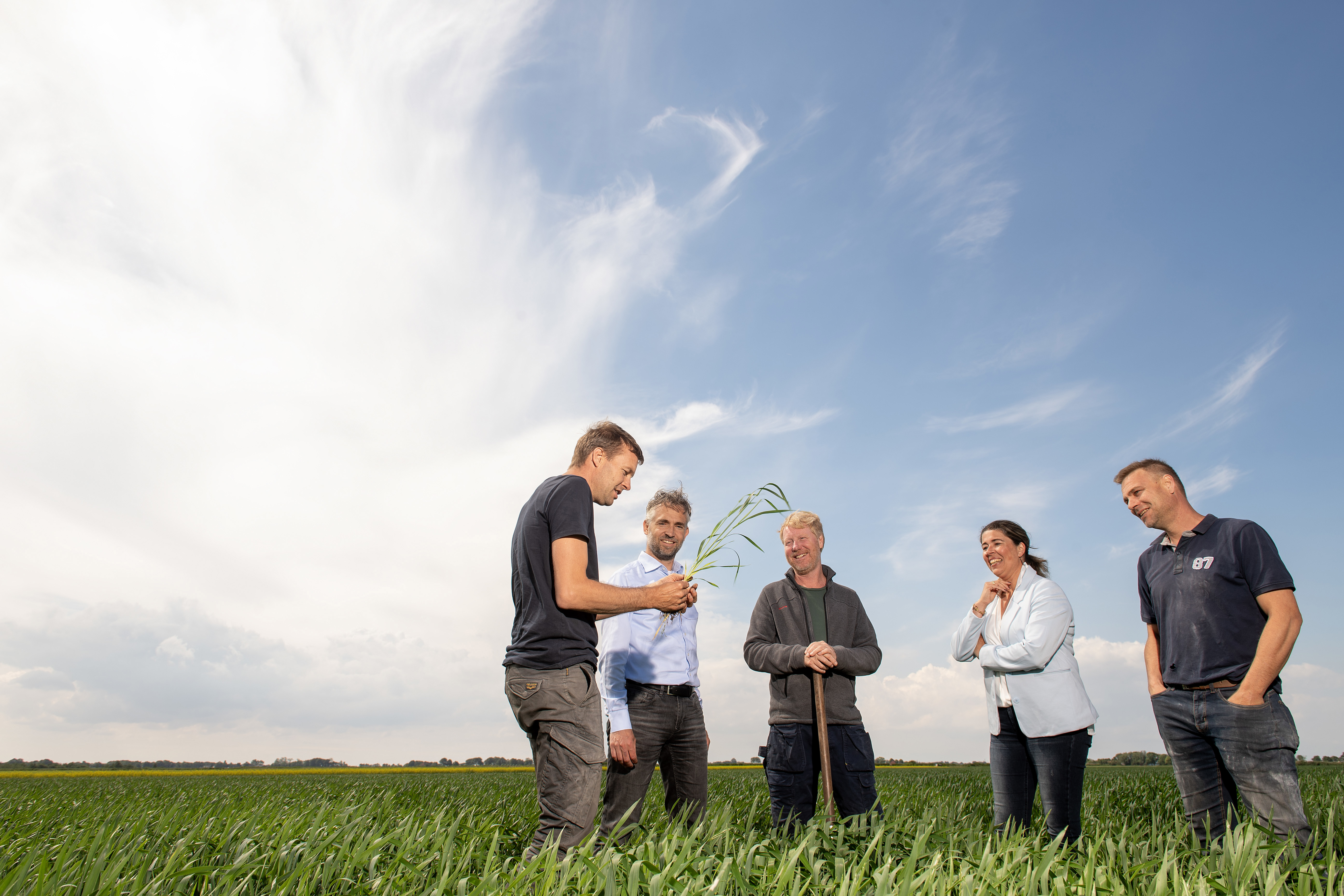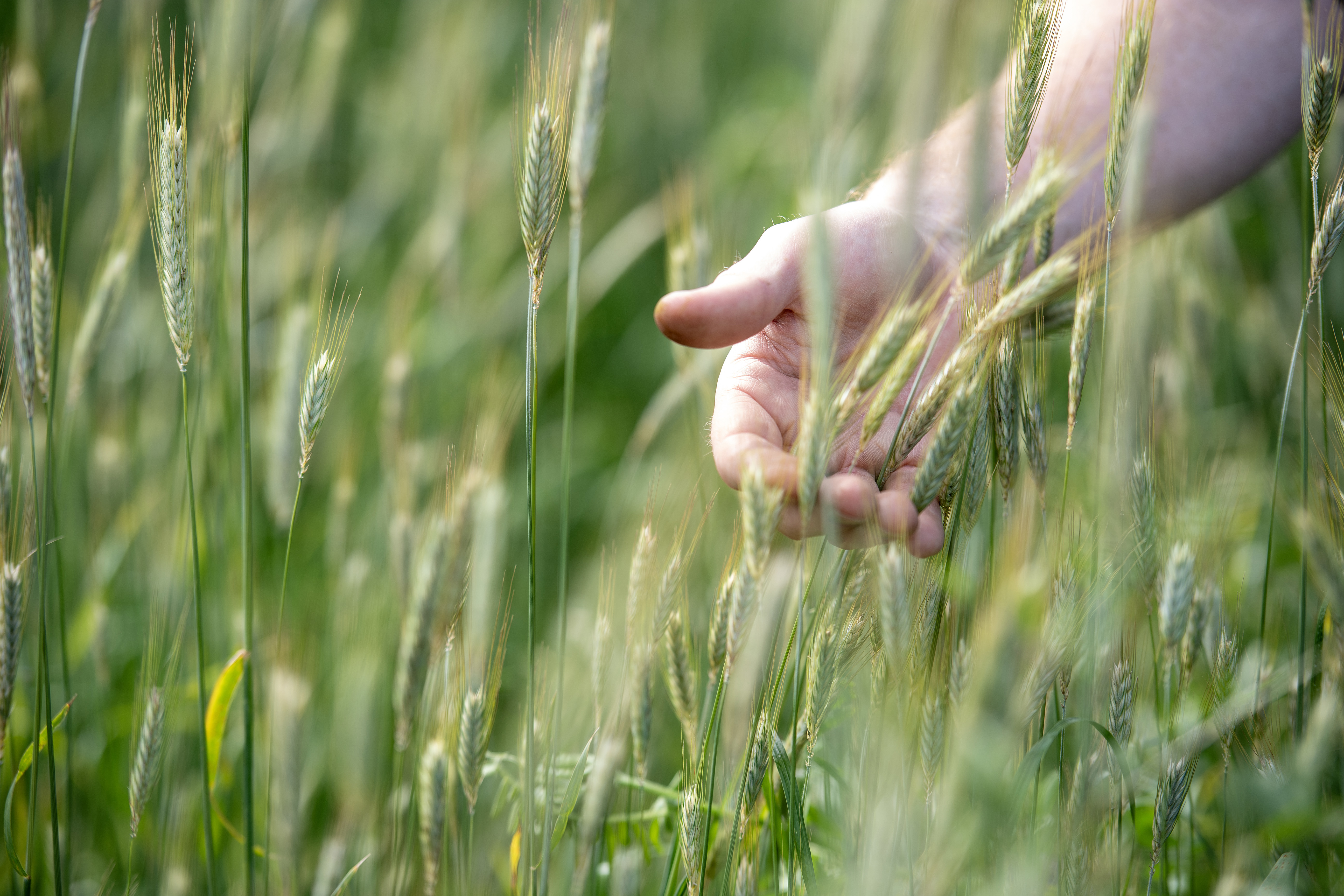© a.s.r. 2025
30 July 2024 | 6 min.
At Graanbroeders, makers of flour, they proudly refer to their grain as ‘the gold of Gaasterland’. Regeneratively grown, with respect for nature. When it came time to scale up, they also needed a serious investor. A party that would give them space to work more with nature. Graanbroeders knocked on the door of the ASR Dutch Farmland Fund and in March 2024, the two parties signed an agreement. We talk to Fadyan Pronk of ASR Dutch Farmland Fund and Matthijs van den Hout of Graanbroeders about the collaboration.
‘Our mission is to become a regenerative model farm that produces healthy food without artificial fertilisers and pesticides. We had been operating for some time and it was time to expand. But, farmland is often financed with high interest rates and repayment obligations. And that while arable farmers usually depend on market prices driven and determined by wholesale players. Therefore, we actively sought an investor with a heart for the environment and regenerative agriculture to pay off debt for the land so that we would have a lower interest rate.’
‘We had already been running a sustainability programme for about two years when Graanbroeders knocked on our steward's door. Within this programme, we help farmers to become more sustainable. The ASR Dutch Farmland Fund owns about 38,000 hectares of land mainly used for arable and dairy farming. Farmers who use agricultural land from us can receive a discount of 10% in the first three years of the contract and 5% per cent during the remaining term, if they manage their land sustainably. For example, by working on healthy soil and achieving more biodiversity.
Many farmers have the knowledge and the will to work more nature-inclusively. Often there is also a transition plan to natural farming, but this creates financial problems and uncertainty. We want to accommodate this. The discount we provide is there both for existing tenants who already meet the set sustainability conditions and for new tenants who can meet the set sustainability conditions from the start.’
‘Yes! And while talking and discussing, we came up with a tailor-made solution. In it, we ask more from the farmer, for example, more frequent contact and more data. We have a comprehensive clause on data sharing. This data gives us insight into the impact of the transition on soil quality, for instance. The data also helps to further sharpen our sustainability programme. Every year we want to see a progress report. Until after six to seven years, Graanbroeders is at the desired level. There is a hefty discount in return for which the company is allowed flexibility (see box).’

Fadyan: ‘The sustainability transition has to happen. Biodiversity must improve, CO2 reduction must take place. Farmers are often seen as causing the problems. But we as real estate investment managers also play a role and can settle for less return.
On the other hand: we do remain a real estate investment manager. We have to pay pension contributions, so returns are important. But we expect soil quality to increase significantly. So we assume that sustainably managed land will hold its value or there will be appreciation. So we earn back the discount we give. And the farmers also benefit.’
Matthijs: ‘On its own, a farmer is only a small market player. Nine out of 10 farmers struggle with business models, capital pressures, regulations. It is certainly not a carefree existence. Working on a farm and capital are two separate worlds. There is a lot of separation and little connection.
A bigger party like a.s.r. can actually help. For us, it means much less cost to the land, which are normally high costs: ground rent, interest and redemption. Thanks to the ASR Dutch Farmland Fund, we can now use that money to make adjustments to the machinery and make the transition to a fully regenerative arable farm.
‘That space we get is essential. Normally, you have to provide evidence first and only then do investors step in. This works the other way round. It is so attractive to have much lower land costs for the first two and a half years (see box). As a food producer, it is nice if you get air and space to make strides. And that you can maintain pleasure in your work and not be weighed down by debt.’
Matthijs: ‘Over the next five to 10 years, we want to become an example farm for regenerative agriculture. For other farmers and consumers. They can experience with us what a healthy farm looks like. How we grow primal grains that grow on their own, making them rich in nutrients and resistant to all kinds of weather conditions.
We also want to be a substantial market player by then, making flour and flour with our own bakery without artificial fertilisers. And then we will also sell bread directly to consumers through our visitor centre. If there are active entrepreneurs and market players, more will naturally follow.
You already see surrounding farmers looking at us. These are often cattle farmers. There are a few elderly farmers among them who don't really feel like changing anymore. But they are interested anyway and cautiously inquire how we are doing things.’
‘Here in the Gaasterland, we are part of nature so we also want to work with nature. Among other things, by making the soil healthy. We don't use artificial fertilisers or pesticides. We have permanent cover with catch crops for good CO2 uptake. We sow the edges of the fields with flowers for more biodiversity.’
‘For this, we have a six-year cropping plan. We grow cereals for two years, grasses for two years and maize for two years. We then exchange those pieces of land with other farmers so they can do the same.’
‘That is certainly important. But we should also expect something from consumers. Many people want the cheapest. Not the most sustainable. There should be more incentive from the government. Sustainably produced food should become more attractive in shops.
There should also be regulatory space for the transition from the government. For example, for on-farm recreation. That is almost impossible to finance now because the rules are so strict. The farmer is manager of the countryside. Let's make sure the farmer gets the space needed for more natural farming.’

Source: Natuurlijkkapitaal.nl